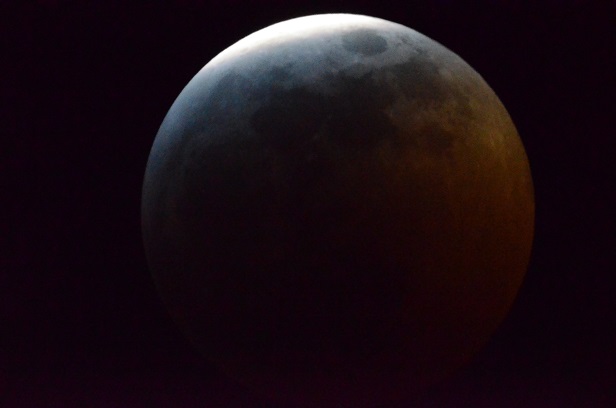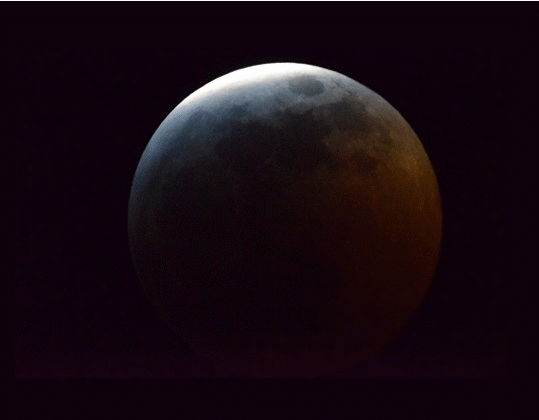It was very cold on lunar eclipse night here in the Chicago area, but also very clear, so this counts as good luck.
I set up my Orion Starmax 127 on its equatorial mount right in the driveway, but with no clocking – just the knobs. I used my Nikon D5100 camera body mounted for prime focus photography. The moon is just slightly too large for this ( especially the “supermoon” ! ) but I wanted a large image.
I adjusted the exposure time and ISO sensitivity as it approached totality, so that the sequence I’m showing here was at the “Hi 1” ISO setting with a shutter speed of 1/25 of a second.
Here is the first image of the sequence
The bright rim was just a very faint glimmer to the naked eye, and I’m not sure why it seemed to persist for so long.
The images are 2464 x 1632 pixels and are reduced to 493 x 397 in MS Paint. I further edited them in MS Paint to position them consistently for the animation. I made the image size 540 x 420 and filled in the boundary ( after positioning ) using the “dropper” ( i.e. Color Picker ) to match the dark sky. This worked pretty well.
There was one frame where I clipped the bright rim, and this created a jarring discontinuity. So, I ( rather crudely ) filled it in with a facsimile. It’s easy to see as it goes by, but I think it makes the viewing easier.
The animation runs from 10:48 PM to 11:00 PM ( CST, ) according to the camera timestamps.


